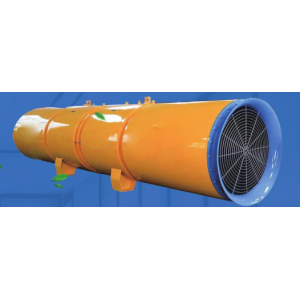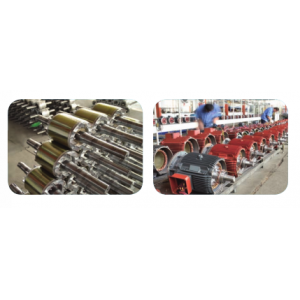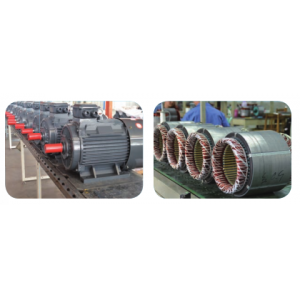The Key Role and Application Examples of Axial Flow Fans in Marine Engineering
Axial flow fans play a crucial role in various aspects of marine engineering, contributing significantly to the functionality and efficiency of marine systems. In this article, we will explore the key role of axial flow fans in marine engineering and discuss some application examples highlighting their importance.
Key Role of Axial Flow Fans in Marine Engineering:
1. Ventilation and Air Quality: One of the primary roles of axial flow fans in marine engineering is to provide efficient ventilation and maintain good air quality onboard ships, offshore platforms, and other marine structures. They help in removing stale air, controlling humidity, and preventing the buildup of harmful gases, ensuring a healthy environment for crew members and passengers.
2. Cooling Systems: Axial flow fans are integral components of cooling systems in marine applications. They are used to dissipate heat generated by engines, machinery, and electronic equipment onboard ships and offshore installations. By facilitating the circulation of cool air and exhausting hot air, they prevent overheating and ensure optimal operating conditions.
3. Engine Room Ventilation: The engine room is a critical area onboard ships where various machinery and systems operate. Axial flow fans are essential for providing adequate ventilation in the engine room, removing heat generated by engines and machinery, and maintaining a safe and comfortable working environment for crew members.
4. Cargo Hold Ventilation: In cargo ships, proper ventilation of cargo holds is essential to prevent the accumulation of moisture, mold, and odors, which can damage cargo and compromise safety. Axial flow fans are used to ensure efficient airflow within cargo holds, contributing to cargo preservation and maintaining cargo quality during transport.
5. Fire and Smoke Control: In the event of a fire onboard a vessel or offshore platform, axial flow fans play a critical role in smoke extraction and controlling fire spread. They help to remove smoke and toxic gases from enclosed spaces, allowing for safe evacuation and firefighting operations.
Application Examples:
1. Axial Flow Fans in Cruise Ships: In cruise ships, axial flow fans are used for ventilation in passenger cabins, common areas, engine rooms, and kitchens. They contribute to passenger comfort and safety by maintaining a fresh and healthy indoor environment.
2. Offshore Wind Farms: Axial flow fans are employed in offshore wind farms to provide ventilation and cooling for electrical components, control rooms, and personnel working in offshore installations. They help to prevent equipment overheating and ensure reliable operation of wind turbines.
3. Naval Vessels: Axial flow fans are essential in naval vessels for engine room ventilation, cooling of electronic systems, and maintaining air quality in living quarters and operational areas. They play a crucial role in supporting naval operations and crew comfort during extended missions at sea.
4. Oil and Gas Platforms: In offshore oil and gas platforms, axial flow fans are used for ventilation in living quarters, control rooms, and processing areas. They contribute to the safety and productivity of offshore personnel by providing adequate airflow and climate control in harsh offshore environments.
In conclusion, axial flow fans are indispensable components in marine engineering, serving diverse functions such as ventilation, cooling, fire safety, and environmental control. Their efficient operation and reliability make them essential for ensuring the smooth functioning and safety of marine systems and installations.
 Pipe connection method of air
Pipe connection method of air
 Installation and debugging of
Installation and debugging of
 Advantages and adjustment meth
Advantages and adjustment meth
 How to debug a centrifugal cur
How to debug a centrifugal cur

